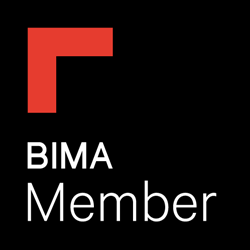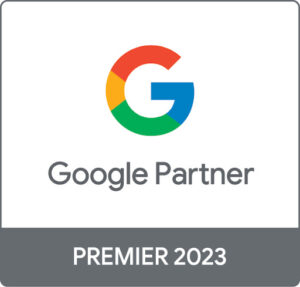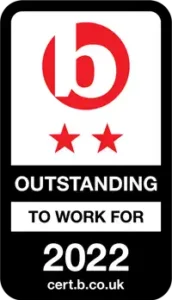How to write good SEO copy for Google
Writing is easy for some, gruelling for others. Remarkable writers are able to express ideas clearly. They deeply think about what they want to convey in their writing. They write with a story, and offer new ideas, insight and teach their readers.
I believe the ability to write well is within all of us. But writing well is one thing – writing for an online audience is completely different.
It has been said that you have just 5 seconds to capture a user’s attention once they have clicked through to a landing page. Does that like a long time to you? If yes, why not try it for yourself? Google something random, click on the first result and stay on that page for five full seconds. What stands out on that page? What do you remember? If the answer is nothing then you’d most likely have bounced if you were a real lead.
Five seconds is all you have to engage your website’s visitors on any landing page, blog or product page.
Before you begin think about the following:
- Who is this piece of content for?
- What is the purpose of this piece of content?
- What problem are you trying to solve?
- What are the main questions your potential visitors will have?
- How can you answer those questions with simple, insightful content?
- What keyword queries are being used that relate to your content?
- What action would you like the visitor to have when they land on the page?
- How can you reinforce your brand message and tone of voice throughout?
Our SEO Guidelines for Beginners
1. Word Limit: writing at least 600 words enables natural multiple keyword targeting on your page and allows Google to get a good understanding of what the content is about, which helps with keyword rankings and sending relevant visitors to your page.
Keep language natural and aim to use variations of your targeted keywords, keep your tone on brand and exclusively focus on writing for your audience.
2. Adding in Keywords: before you begin writing it’s worth taking some time to research the types of keywords and phrases your customers are using for your page’s topic.
Sprinkle in variations of your keywords a few times on your page. Emphasise your targeted keywords in the body copy, the page URL, the Page Title, the Meta Description, the alt image tags, the main heading, subheadings, title tags, formatted words and links.
3. Adding Images: each page should contain at least a couple of great pictures. Eye-catching images break up those chunky paragraphs and ugly, long walls of text. Images will help people digest your content and give context to what you are writing about.
One problem – Google can’t read images. To help Google, tag your images with descriptive, keyword considered Alt Image Tags (this should be mandatory before publishing the page).
We recommend your size images at 100% width with the height set to ‘auto’. This will look better for the flow of content and the overall design of the page, and will help resizing for different devices.
4. Use Page Titles: whatever you do, don’t automate your page titles. Your page title is without a doubt the most influential element that gets people to click through to your page from Google.
For SEO newbies – page titles appear as those big blue links on Google’s search results page – so yeah, majorly important!
Add in your targeted keywords here, Google still uses page titles, but really you should focus on the customer here. What will make them click your search result over your competitors?
5. Use Meta Descriptions: please, please, please don’t automate your Meta Descriptions.
Although they’re no longer a massive ranking factor, they are still really important.
Your meta descriptions should be written with as much care as your Google AdWords advert copy. Yes, your Meta Descriptions should contain keywords – most importantly think about how they will appear in Google’s search results.
Tip: Write a summarised version of your webpage without copying your opening paragraph.
6. Use H1 Headings: every page should start with an attention-grabbing headline. A great H1 heading will graciously combine informing and persuading your reader with keyword placement for SEO.
Your H1 heading should act as the title of your page. The bold statement, the killer headline, the hook that gets your readers to read on.
7. Use H2s, H3s & H4 Tags: in 2016 it’s definitely cool to grab your reader’s attention with headings and sub-headings.
Use keywords for Google to grab hold of too, and absolutely use your headings to deliver key messages.
8. Create a Logical Flow: a general rule of writing is the first paragraph should sum up what the article’s about and what the reader can expect if they stay. If your killer heading didn’t make it obvious, a short summary keep skim readers too.
Simplify copy and break-up long paragraphs using bullet-point lists, headings, subheadings, nice contextual pictures, related links, etc. People don’t tend to read long walls of text on small devices these days, chunky paragraphs are horrible to read on most devices.
Think about your customer’s mindset and journey from the start to the bottom of your page. Were your calls-to-actions in the right places? Was it helpful? Did you really answer the question(s) you set out to answer? Be honest, did you?
9. Keep it Simple but Meaningful: at Seed we’re great believers in keeping things simple. “Do more with less” almost made our list of company values but was left out after we decided we could do more with less.
Hilarious jokes aside, all elements of your web pages must give value to your audience. Less words, more meaning!
10. Harness the Power of Linking: linking to other pages helps your visitors navigate around your website. The more pages they visit, the more engaged they become. The more useful they find your website, the more likely they become customers.
If you’re talking about how a fantastic product you sell can help your customers then make their lives easier by linking to it!
By connecting pages with useful links you’ll help both Google and your visitors navigate around your site. Using keywords to connect related pages also helps Google understand what each page is about, and, therefore, which keywords to rank it for.
So there we have our 10 SEO guidelines for ranking your website in 2016! Follow our simple best SEO practices, don’t stop thinking about your audience and keep on going – you’ll get to the top of Google in no time .. ahem!









